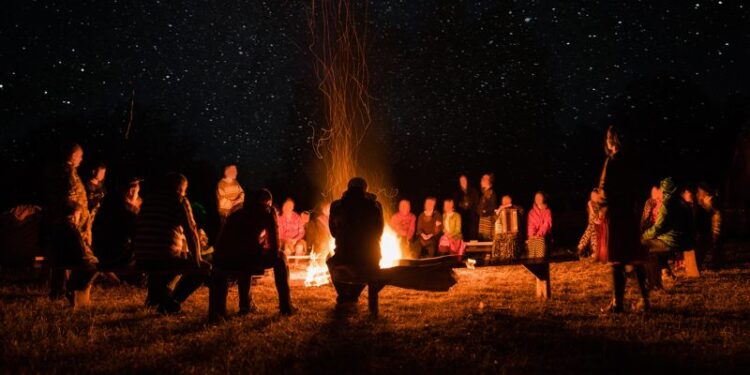Halloween… A holiday filled with tradition that has spread throughout the world. Originating from the ancient Celtic festival All Hallows Eve, Halloween made its appearance in North America during the 1800s and has since become a favorite holiday of many. In the States, it’s celebrated with costumes, the carving of jack-o-lanterns, re-runs of horror movies, and of course, trick-or-treating.
Halloween in Panama is a different story. Though pop culture has made American traditions well-known to locals, this holiday hasn’t fully established itself on the Isthmus. For young adults, it’s simply Halloween-themed nightclub events. For everybody else, Oct. 31 marks the beginning of the month with the most national holidays. Panama’s independence is not taken lightly, and the country spends all of November celebrating it.
Halloween may not be celebrated here, but that doesn’t mean Panama is without its own spooky history…
And no, Freddy Krueger doesn’t make his way down to terrorize people, and I don’t think Bigfoot would enjoy the Panamanian heat…
Whether you’re a believer or not, in the spirit of Halloween and for those of us who miss handing out treats to tiny ghosts and witches, here are a few traditional Panamanian myths and legends…
Brujas and zánganos are witches and warlocks.
According to legend, they’re people who can float out of their bodies while sleeping to wreak havoc on unsuspecting victims.
How do you know if a witch or warlock is bothering you? Hearing footsteps on the roof is a dead giveaway. You may wake up in the morning with unexplained bruises, scratches, and marks on your body. You might also experience sleep paralysis—the sensation of someone sitting or putting weight on your chest.
Those brave enough to hunt for answers must shout an invitation for the witch or warlock to have a cup of coffee at their house in the morning… it’s bound to show up in human form the next day.
If you already suspect who the neighborhood bruja or zángano is, confirm your suspicions by flipping a broom while they’re inside your house. If you’re right, they won’t be able to leave your house until you flip the broom back to its original position.
How do you avoid a visit from a bruja or zángano? Put your pajamas on inside-out, and you’ll sleep like a baby. If you hear it approaching, listen closely… It’s said that if you hear a whistle from afar, the being is close by. If the sound is nearby, the creature is distant.
Duendes are a sinister version of an imaginary friend.
They’re said to be supernatural children whose job is to lure other kids into joining them… and helping them perform tasks for their masters.
They look like normal children but can appear and disappear as they please. Normally, only kids see them, and once a human child begins to play with a duende, they also go missing.
No matter how many people search for the child, they’ll only be able to hear the voices of their parents and godmother.
Get Your Free Panama Report Today!
Simply enter your email address below and we'll send you our FREE REPORT - Live And Invest In Panama: The #1 Retirement Haven In The Americas.
La Tulivieja or La Tepesa is so infamous, she’s been given two names in Panama.
There are different versions of the myth throughout Latin America…
In Mexico and Colombia, she’s known as La Llorona. In Panama her name and origin story vary by province. But mention La Tulivieja or La Tepesa to any Panamanian, and they’ll know who you’re talking about…
Some say she neglected her kids to go to a baile típico (Panama’s version of a barn dance) and now haunts drunken people on their way home from these gatherings. Others say she drowned her newborn child.
The myth says God punished her with the penance of roaming the land moaning and crying, searching in vain for her lost child. The few that claim to have seen her say she’s short enough to be mistaken for a five-year-old but with hair that drags around her feet. She walks with her heels forward but prefers to travel by air, hopping from treetop to treetop mostly around rivers and streams.
Her main target is any unbaptized child.
La Silampa is also known as the Mother of the Night. Legend says she comes out at midnight, especially on dark winter (rainy season) nights.
She takes the form of a white shadow that grows quickly until it’s bigger than a palm tree. She then keeps growing until she’s suddenly out of sight. If you don’t run for shelter or stand under a tree, you’re doomed.
There you have it… a few of Panama’s creepy and popular myths and legends.
Those in the city have heard the stories, but never in detail. It takes a trip inland to get the best stories. The smaller the town, the richer the culture and traditions.
Next time you’re in the interior, ask the locals about the area’s legends—you’re guaranteed to hear hair-raising folktales best told in the middle of the night…
Happy Halloween!
Geraldine Gonzalez
Panama Insider










